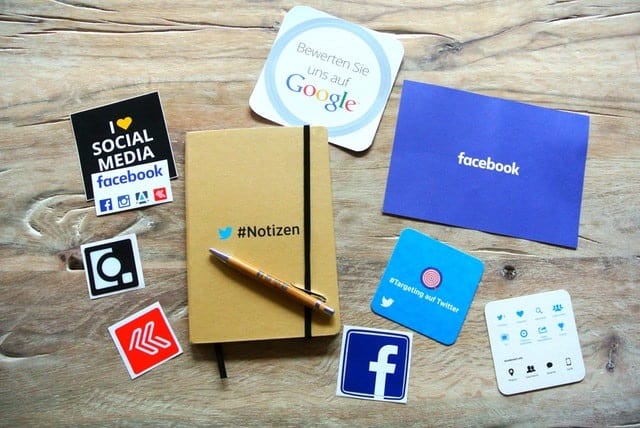Blogging can bring you a lot of satisfaction, but it’s definitely not an easy job. Writing about traveling might be even harder than you imagine, especially if you want to turn your blog into a profitable business. Luckily for you, though, we’re here to offer you some great tips that will make your job easier.
Talk to a specific audience
The first thing you’ll have to think of is who your audience is. The trap is to dismiss this issue as pointless, saying that you’re planning to attract a large pool of visitors and that you want to inspire everyone.
The mistake arises because not everyone is interested in the same topics, let alone the same style. So it’s difficult enough to write about everything: urban sightseeing, culinary tourism, hiking, etc. Establishing a niche is essential so you won’t have to spend 24 hours per day in front of your PC, and your blog can have a differentiating factor.
Besides that, think of the tone and style you’re planning to employ. Some people love personal descriptions and juicy details, while others are more interested in technical information and hate it when a travel blogger isn’t objective.
Include pictures and videos
You will need the best backpacking tripod for the money here because people expect to see great photos and videos. With the evolution of the Internet, the way we read articles has changed drastically and we rely on pictures as much as on text.
But since your blog is about traveling, you need to show people the actual sights and locations they’ll possibly end up visiting. If you provide enough visual stimuli, as well as visual information, people are bound to come back to your blog. That’s when you’ll have a loyal fan base and potential customers of your products.
Besides, videos are always a good idea because they help you prove a point, explain how something works in more detail or get personal. So if you’re traveling to an exotic country, you can actually show people where you’re going, how hotel/ restaurant staff is treating you and what great adventures you’re trying.
Sell a product
This refers to different aspects. The easiest thing you can do is endorse a certain product, but one that you’ll know your readers will need. For instance, if you’re talking about great winter hiking locations, you can present the brand of hiking boots you own.
But it’s also advisable to transform your brand into a product and offer your readers something they can’t get anywhere else. For example, you can write an e-book and get your profits from that, or get a rock climbing degree and organize courses. Wine tasting classes can be great too if your niche is culinary traveling.
Be honest
If you’re not entirely honest with your readers, sooner or later they’ll give up reading your blog. Say you’re recommending them a new restaurant or hotel. If you haven’t stayed there yourself, you should do extensive research. Otherwise, they’ll out you as a downright liar, and you will lose important customers.
So even if you sign contracts with a business that needs promoting through your blog, you shouldn’t lie about their services. Discussing their minuses along with their pluses will make you look objective, and you’ll become a trustworthy source of information for your audience.
Incorporate social media
Using Twitter, Instagram and Facebook along with your blog is mandatory to maintain a solid relationship with your visitors. Besides, you will be a daily presence in their homes so you’ll remind them they should visit your blog for any travel-related queries they might have.
But don’t post anything tedious, repetitive or downright stupid. Make sure you stay relevant to your target and don’t bombard them with useless information or they’ll just unfollow you. You can have a “pic of the day” moment or organize certain contests periodically when readers send their best travel idea or sunset photo and you reward them with a discount for one of the products you’re advertising through your blog.
Make your blog mobile friendly
We can’t emphasize enough how important this is, considering that most people own a smartphone today, and they’re using these devices to browse through your blog too. So it’s a bad idea if your blog posts aren’t optimized for the smartphone screen, particularly for people who are already on holiday and are looking for on-the-spot details about certain sights or commodities.
Connect with your readers
A good idea is to rip the advantages of geotagging, by connecting with them through an app that advises about nearby locations. You can sell such an app through your blog, and keep in touch with your readers about places where they go or places where you go, but don’t forget about taking the best portable battery so you can have your phone charged at all times.
The idea is to get on a very personal level with your readers in order to reinforce their feelings of loyalty to the brand you’re now becoming. Besides, if you’re a constant presence in their lives, they’ll be more inclined to use your blog as a source.
You can keep your audience up to date on where you are and what new adventure you’re trying out, so they can give their input. You should ask their opinion about new posts they want to read about, but also about the locations you’ve already discussed. Don’t dismiss any voice, even if they’re critical. Respond with humor and you’ll gain more followers that way. The only things you shouldn’t allow are insults.
You should avoid cliché phrases like “Don’t forget to like and follow” or contests that involve liking or sharing a status because those aren’t relevant for your audience. Instead of helping them out with something, you’re actually putting conditions that show your help isn’t unconditional and that your relationship isn’t that close.
That said, tell us if we’ve helped or not. What other issues have you encountered with your travel blog so far? The comment section is a scroll away.




